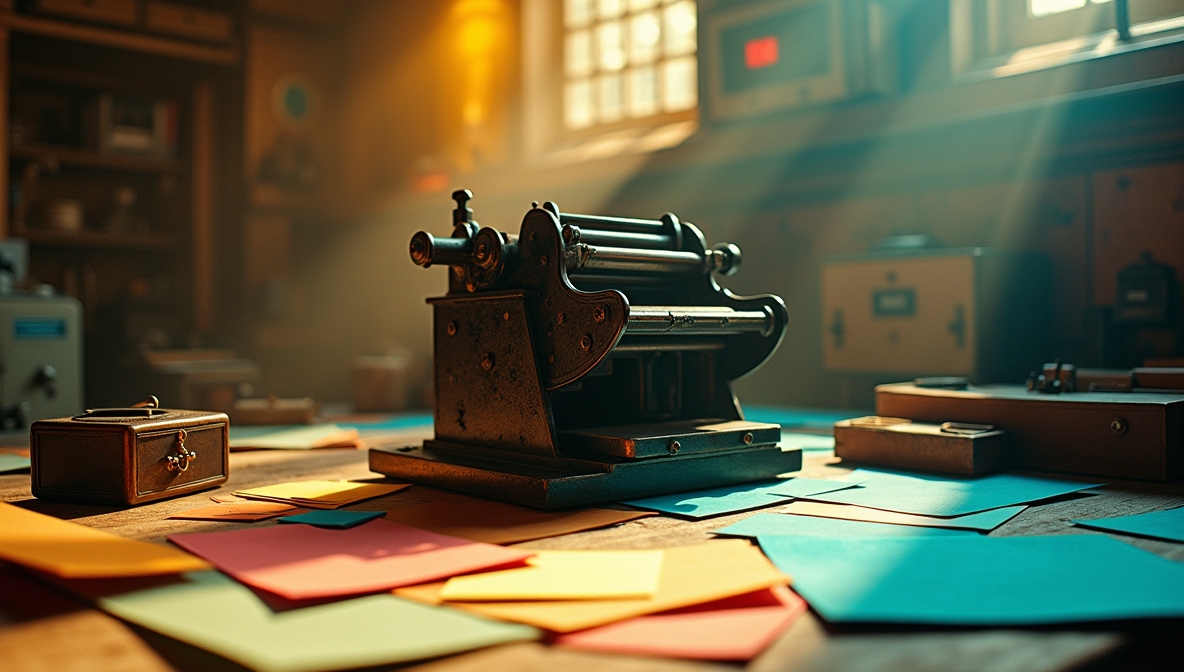Letterpress printing is gaining traction again because of its craftsmanship, tactile quality, and timeless appeal. Digital designs flood screens daily, yet letterpress stands apart with deep impressions, rich textures, and a handmade touch. It transforms ink and paper into something more than a print—it creates an experience.
A Return to Craftsmanship
Letterpress printing requires skill, patience, and precision. Unlike digital methods, where mass production prioritizes speed, letterpress demands careful setup, manual pressure adjustments, and attention to detail. Each print carries slight variations, making every piece unique. This craftsmanship appeals to designers, artists, and businesses looking for authenticity.
Why People Are Choosing Letterpress Again
- Tactile Appeal – The deep impressions create a texture that modern printing lacks.
- Handmade Quality – Small batch production adds a personal touch.
- Durability – Letterpress prints often outlast digital prints due to high-quality materials.
- Aesthetic Value – Vintage style mixed with modern design creates a striking effect.
The Allure of Texture and Depth
Letterpress offers a sensory experience. Running fingers over thick, cotton-based paper with crisp impressions provides something digital prints cannot replicate. Texture adds another layer of interaction, making business cards, invitations, and stationery more memorable.
Industries Reviving Letterpress
- Wedding Invitations – Couples want personalized, handcrafted invitations.
- Luxury Branding – High-end brands use letterpress for packaging and marketing.
- Boutique Stationery – Artisans craft unique letterpress greeting cards.
- Independent Publishing – Small presses print poetry and art books using traditional methods.
Sustainability and Letterpress Printing
Letterpress supports sustainability by favoring natural materials, minimal waste, and long-lasting prints. Many studios use cotton paper made from textile scraps, reducing environmental impact. The process also avoids excessive ink usage and disposable plastic-based materials.
Eco-Friendly Practices in Letterpress
- Recycled and Cotton Papers – Made from sustainable sources.
- Soy and Water-Based Inks – Lower environmental footprint.
- Minimal Energy Use – Hand-operated presses reduce electricity consumption.
Modern Innovations in Letterpress
While traditional techniques remain, new tools and materials have expanded possibilities. Photopolymer plates allow digital designs to be converted into letterpress-ready formats. This means contemporary illustrations, typography, and intricate patterns can be pressed into paper with the same depth and clarity as traditional metal type.
How Letterpress Adapts to Modern Design
- Digital-to-Analog Workflow – Graphic designers create digital files that can be made into letterpress plates.
- Custom Mixed Inks – Modern color palettes blend with historical techniques.
- Laser-Cut Printing Plates – Faster production while maintaining quality.
Why Businesses Are Investing in Letterpress
Companies looking for distinct branding turn to letterpress for its premium feel. A well-designed business card printed with deep impressions leaves a lasting impact. Letterpress packaging adds sophistication, signaling quality before a product is even opened.
Marketing Benefits of Letterpress
- Memorability – Texture and weight make an impression.
- Luxury Appeal – Signals craftsmanship and exclusivity.
- Tactile Engagement – Encourages physical interaction with branding materials.
Collecting and Preserving Letterpress Art
With renewed interest, old presses are being restored, and vintage type collections are growing. Museums, artists, and enthusiasts work to preserve these machines and techniques. Letterpress workshops offer hands-on experiences, keeping the art alive for new generations.
Where to Experience Letterpress Today
- Letterpress Studios – Workshops offer hands-on printing experiences.
- Independent Printers – Custom letterpress businesses provide bespoke printing services.
- Design Schools – Many include letterpress in typography and printmaking courses.
Final Thoughts
Letterpress printing stands out in a world of mass production. Its combination of craftsmanship, texture, and sustainability makes it more than just a printing method—it’s an art form. As more people seek authenticity in design, letterpress continues to grow, proving that traditional techniques still hold value.


